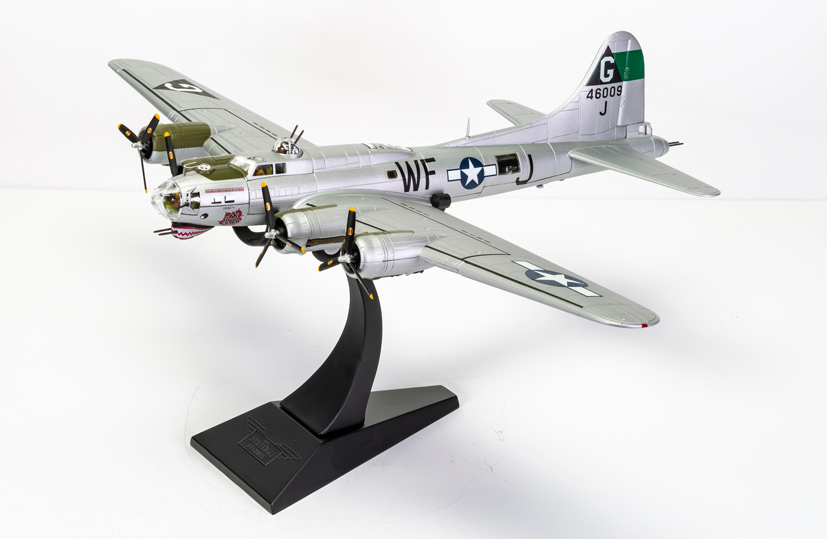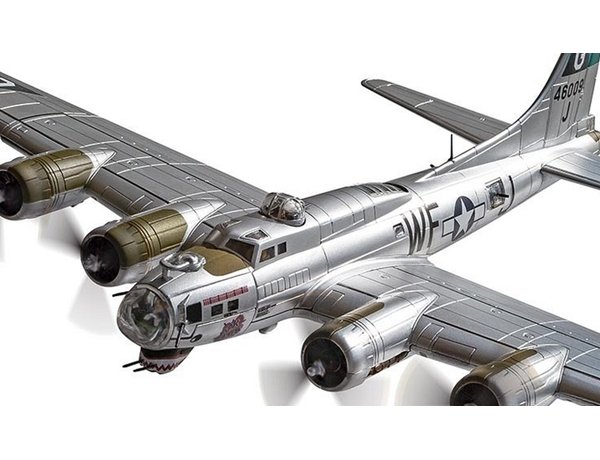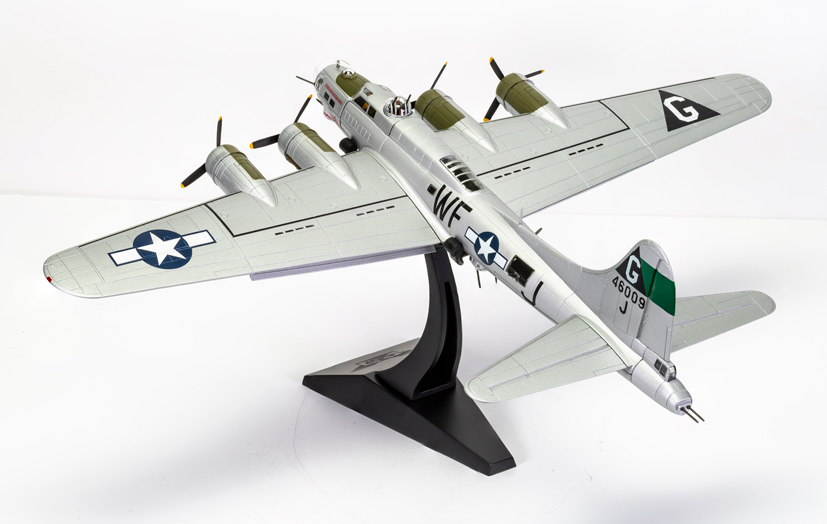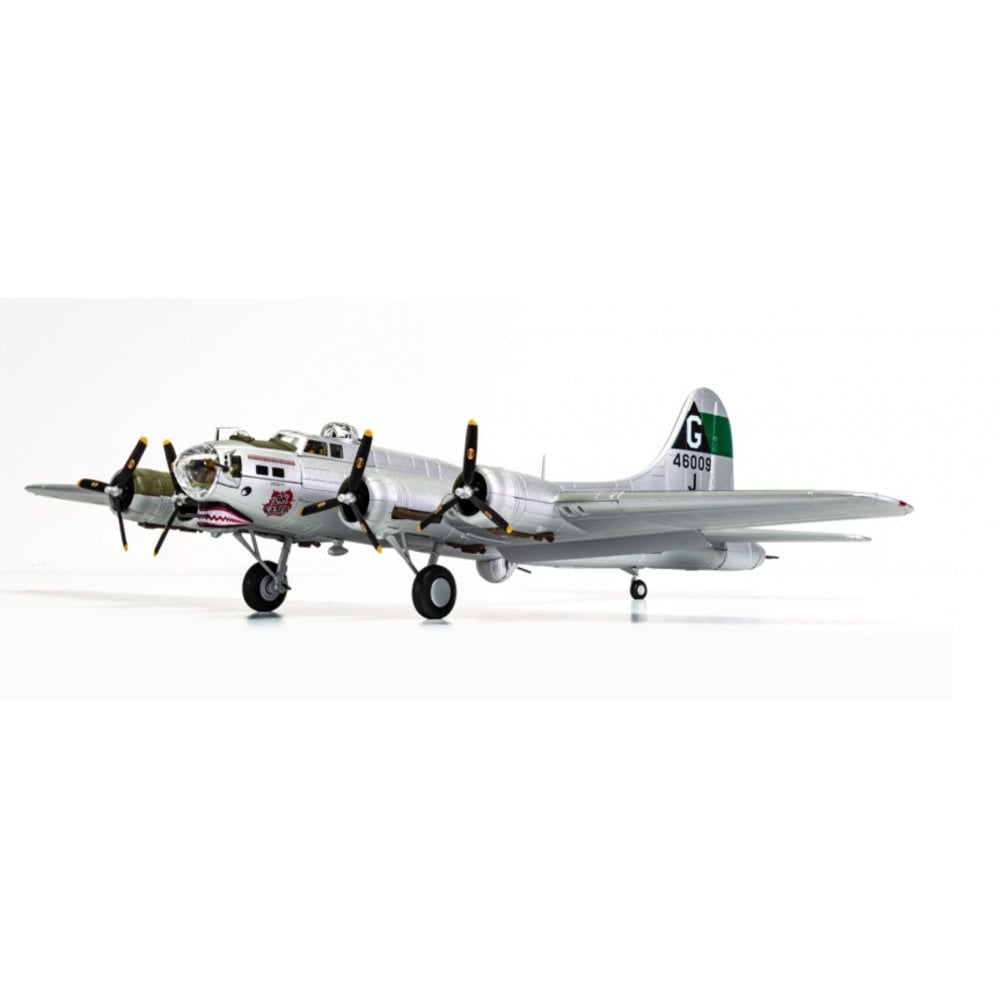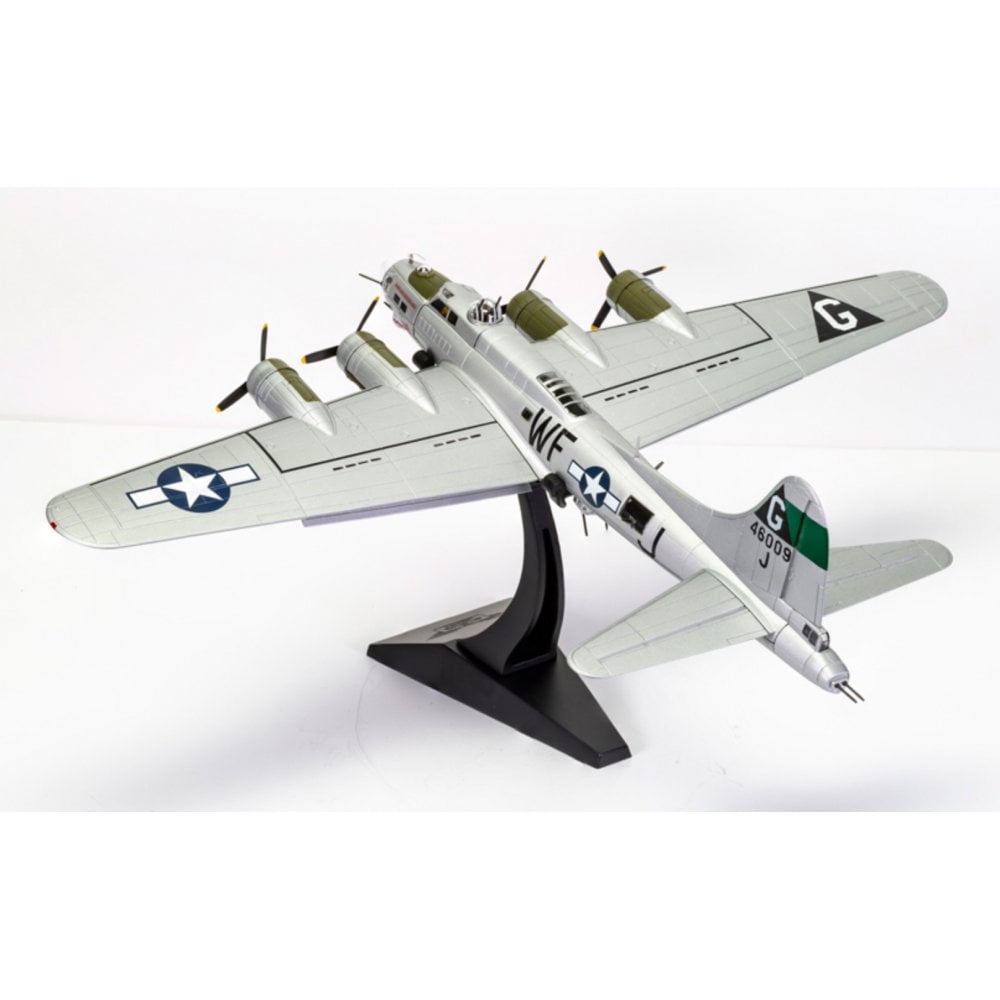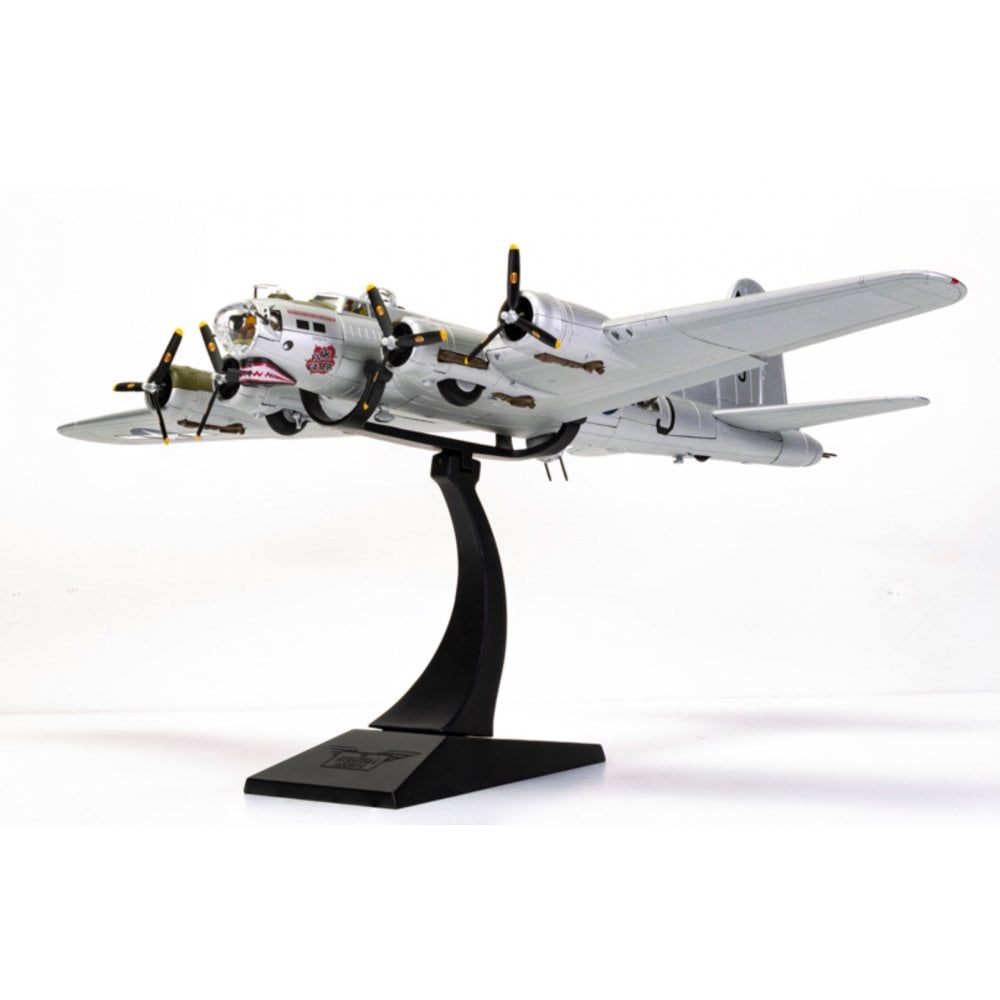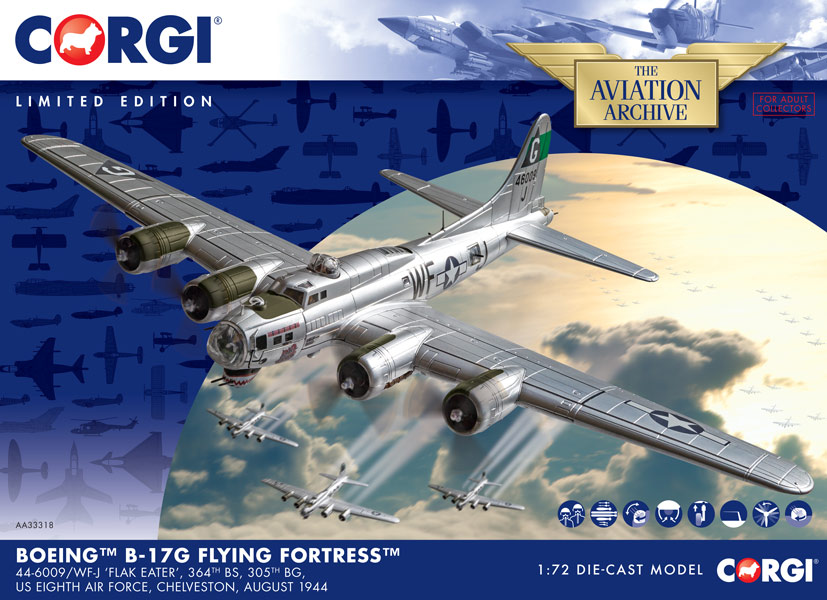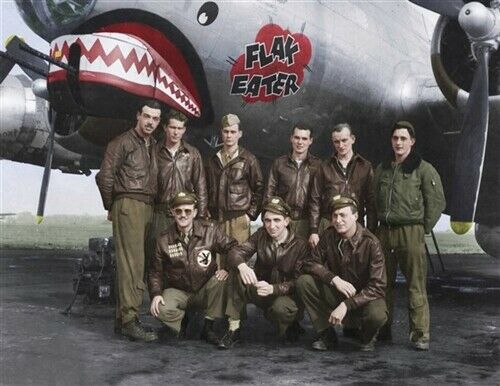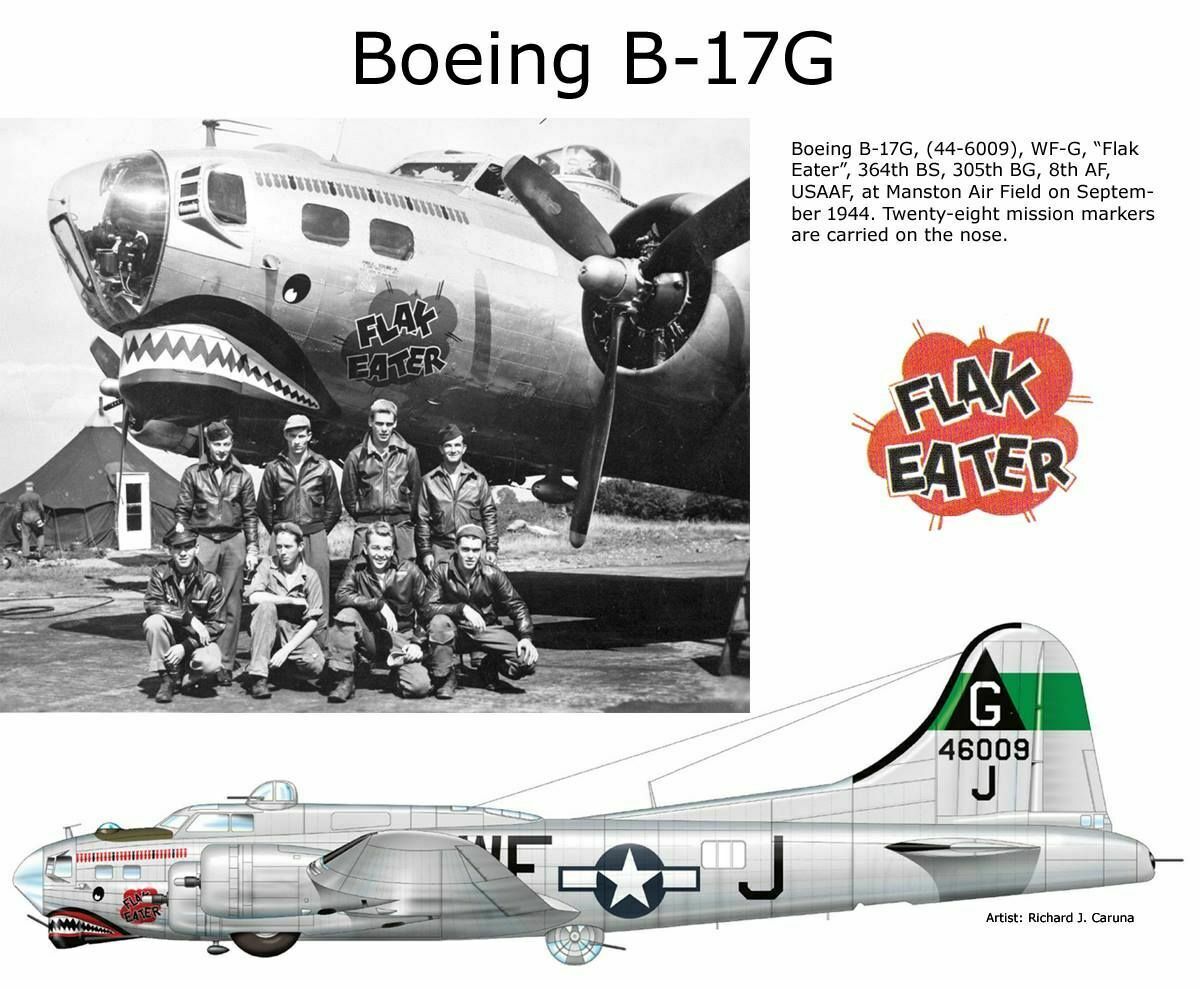Boeing B-17G Flying Fortress – Flak Eater, 364th BS, 305TH BG USAAF, RAF Chelveston 1944
Add to compare1 in stock
£159.99
1 in stock
Corgi Aviation Archive AA33318: Boeing B-17G Flying Fortress serial 44-6009 Flak Eater of the 364th BS, 305th BG USAAF based at Chelveston UK in August 1944. Limited edition of only 1,300 pieces.
Length 12.25 inches Wingspan 17.25 inches
From the perspective of a Luftwaffe fighter pilot, the sight of hundreds of American Flying Fortresses in formation and heading towards them must have been magnificent and terrifying in equal measure. As the Allies pressed home their increasing aerial supremacy throughout 1944, not only would the Luftwaffe have to contend with a wall of defensive fire from the tightly packed bomber formations, they also knew that their protective fighter cover would be on them both before and after they made their almost suicidal attack run. The latest and definitive ‘G’ variant of the B-17 introduced the electrically operated Bendix chin turret, which had been developed to combat the frontal attacks preferred by Luftwaffe fighter pilots against earlier models and further increased the defensive firepower of these heavily armed bombers. Chelveston based B-17G ‘Flak Eater’ of the USAAF 364th Bombardment Squadron certainly wanted any attacking fighter to know that she was equipped with the new nose armament and sported distinctive ‘shark mouth’ artwork to act as a visual deterrent to any enemy pilot looking for a potential target. Despite the frantic nature of the European air war around the time of D-Day, the decision to apply the turret teeth was vindicated, as they helped ‘Flak Eater’ through at least 28 combat missions and to survive the war relatively unscathed. The bomber returned to the US in June 1945, where she was later scrapped at Kingman Army Airfield in Arizona, a fate which awaited the majority of aircraft which had fought so valiantly during WWII.
Designed to meet a US Army Air Corps requirement for a multi-engined bomber to replace the B-10, the B-17 first flew on July 18, 1935. Best known for its role in the US Army Air Forces’ daylight strategic bombing campaign during World War II, the B-17 could fly high and had a long range, and was capable of defending itself from enemy fighters. It was also tough, withstanding extensive battle damage, and was capable of carrying a 6,000 lb bombload. The B-17 became one of the symbols of Allied air power, equipping 32 overseas combat groups and dropping a total of 580,631 metric tons of bombs on European targets.
Designed to meet a US Army Air Corps requirement for a multi-engined bomber to replace the B-10, the B-17 first flew on July 18, 1935. Best known for its role in the US Army Air Forces’ daylight strategic bombing campaign during World War II, the B-17 could fly high and had a long range, and was capable of defending itself from enemy fighters. It was also tough, withstanding extensive battle damage, and was capable of carrying a 6,000 lb bombload. The B-17 became one of the symbols of Allied air power, equipping 32 overseas combat groups and dropping a total of 580,631 metric tons of bombs on European targets.
As of early November 2023, there are six airworthy and registered B-17 aircraft still flying. Five of these are in the US, and one is based in the UK. There are 19 examples that have a current (November 2023) registration with the US FAA. These are not all airworthy, but some have the potential to fly again or have in the past. Note that many of these aircraft have been renamed in preservation – they do not necessarily have their original war names or liveries. Approximately 45 airframes survive in total.
| Weight | 4.1 kg |
|---|

